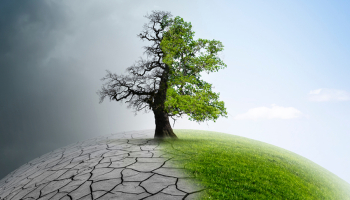A Message to America’s Mid-Sized and Community Banks
It’s hard to make sense of a crisis as it is unfolding, but there are already a few lessons that are emerging
- |
- Written by Jim Scott, CFA — Senior Advisor, Financial Institutions Engagement, Ceres Accelerator for Sustainable Capital Markets

The 2008 financial crisis ended up costing U.S. taxpayers as much as $500 billion while trimming $2 trillion off global GDP. It’s too early to tell what the current 2023 banking crisis will cost, but already a handful of mid-sized banks have failed and several other U.S. banks have seen their share prices plummet, having lost investor confidence.
It’s hard to make sense of a crisis as it is unfolding, but there are already a few lessons that are emerging. For example, depositors with access to social media and an online banking platform can react extremely quickly to confidence-shaking rumors. In March, we saw the first Twitter-fueled bank run in history, where one institution lost $42 billion in deposits in under 24 hours. But perhaps the biggest takeaway is that sometimes the risks are hidden in plain sight. The Federal Reserve started its current cycle of rate hikes in March of 2022, raising them eight times in succession prior to this crisis. We should all be concerned as to why some financial institutions — armed with the most sophisticated risk management tools of any industry — are being caught off-guard by the Fed’s well-telegraphed actions to tame inflation.
As troubling as that is, there are other lying-in-wait risks to U.S. mid-sized and community banks that could have far more devastating consequences.
A recent sobering report from the world's top scientists makes clear it may be too late to avert the most severe impacts of the climate crisis without urgent action . A future, climate risk-driven banking crisis would be far more damaging than the cost of 2008: During just two decades, between 1992 and 2012, extreme heat stress alone shaved an estimated $16 to $65 trillion off the global economy. Further climate inaction could cost the U.S. economy an additional $14.5 trillion by 2070, according to Deloitte.
The good news for bank leaders is that strengthening their institutions’ business models to better address sustainability is not only prudent — it can also be profitable. In a recent report, McKinsey estimates that funding needs for the transition to a net zero emissions economy could exceed $4.4 trillion annually through 2030. Though only a tiny fraction of U.S. banks are currently taking full advantage of this opportunity, some forward-thinking financial institutions have started to pivot their business models to address the climate crisis:
- Credit Unions across the U.S. and Canada currently finance climate resiliency by providing home solar loans, residential geothermal system loans, green home improvement loans, and a variety of clean energy transportation loans for everything from e-bikes to electric vehicles, as outlined in this report on the Credit Union system.
- Some U.S. super-regional banks are already offering their corporate customers innovative deposits to sustainably manage their cash balances.
Moreover, as explored in two reports on transition and physical climate risk from the sustainable advocacy organization Ceres — “Financing A Net Zero Economy: Measuring and Addressing Climate Risk for Banks” and “Financing A Net Zero Economy: The Consequences of Physical Climate Risk for Banks,” respectively — the New York Department of Financial Services, OCC, FDIC and Federal Reserve are currently drafting risk guidance for large banks to better support climate-based opportunity and risk identification. The Fed is also in the early stages of analyzing larger banks’ climate risk via a pilot scenario analysis program.
Over just a few days in March, customers who were fearful their money wasn’t safe withdrew $108 billion in deposits from mid-sized and community banks, draining the lifeblood from these institutions. Banks looking to avoid a similar run while restoring regulatory and customer confidence can do no better than facing emerging risks like climate change head-on and proactively.
Author: Jim Scott, CFA — Senior Advisor, Financial Institutions Engagement, Ceres Accelerator for Sustainable Capital Markets
Tagged under Risk Management, Lines of Business, Buyside Exchange, Impact Investing, Net Zero, SDG, Climate Crisis, Renewable Energy, SRI, Socially Responsible Investing, Sustainability, Feature, Feature3,
Related items
- Inflation Continues to Grow Impacting All Parts of the Economy
- Banking Exchange Hosts Expert on Lending Regulatory Compliance
- Merger & Acquisition Round Up: MidFirst Bank, Provident
- FinCEN Underestimates Time Required to File Suspicious Activity Report
- Retirement Planning Creates Discord Among Couples













